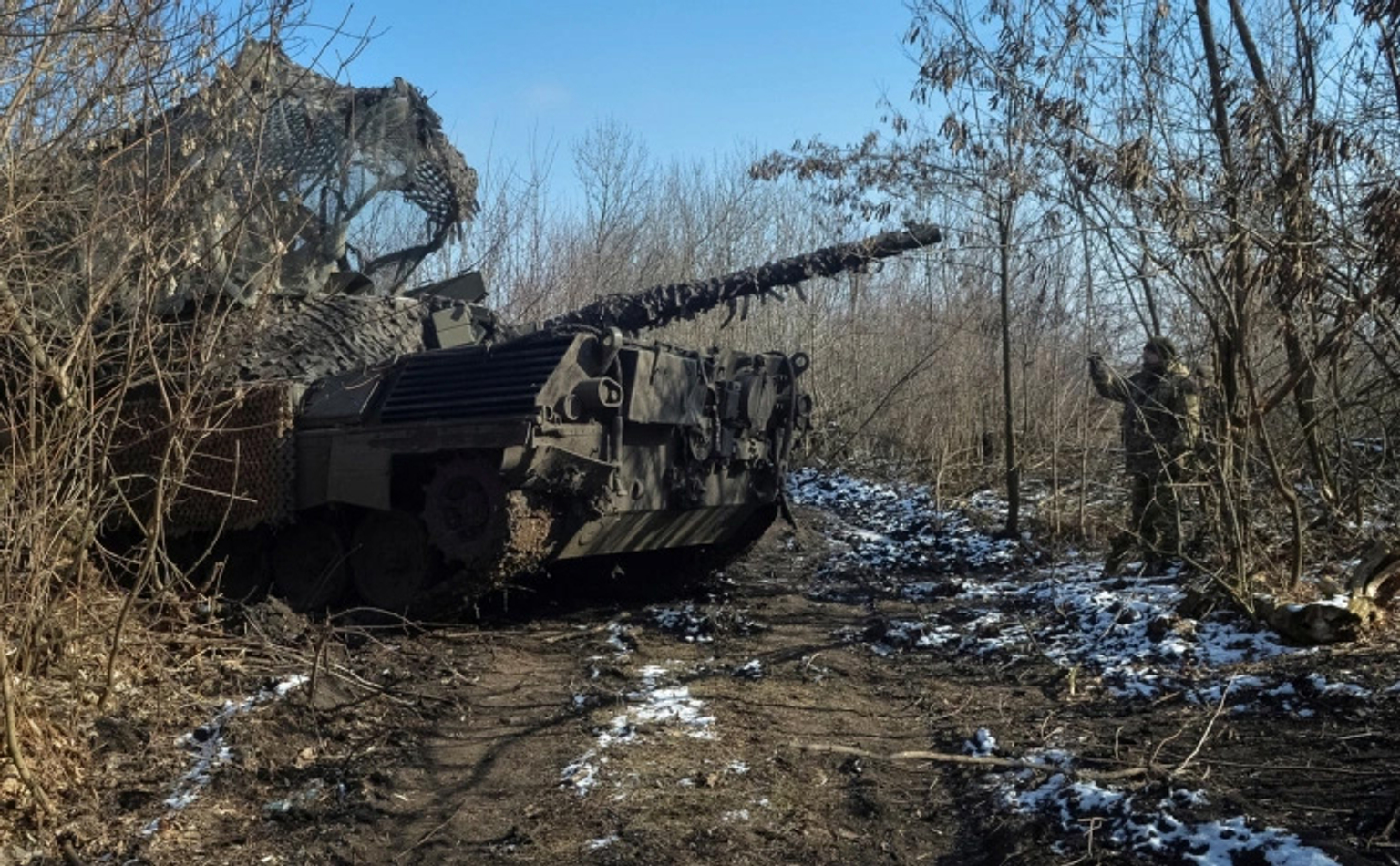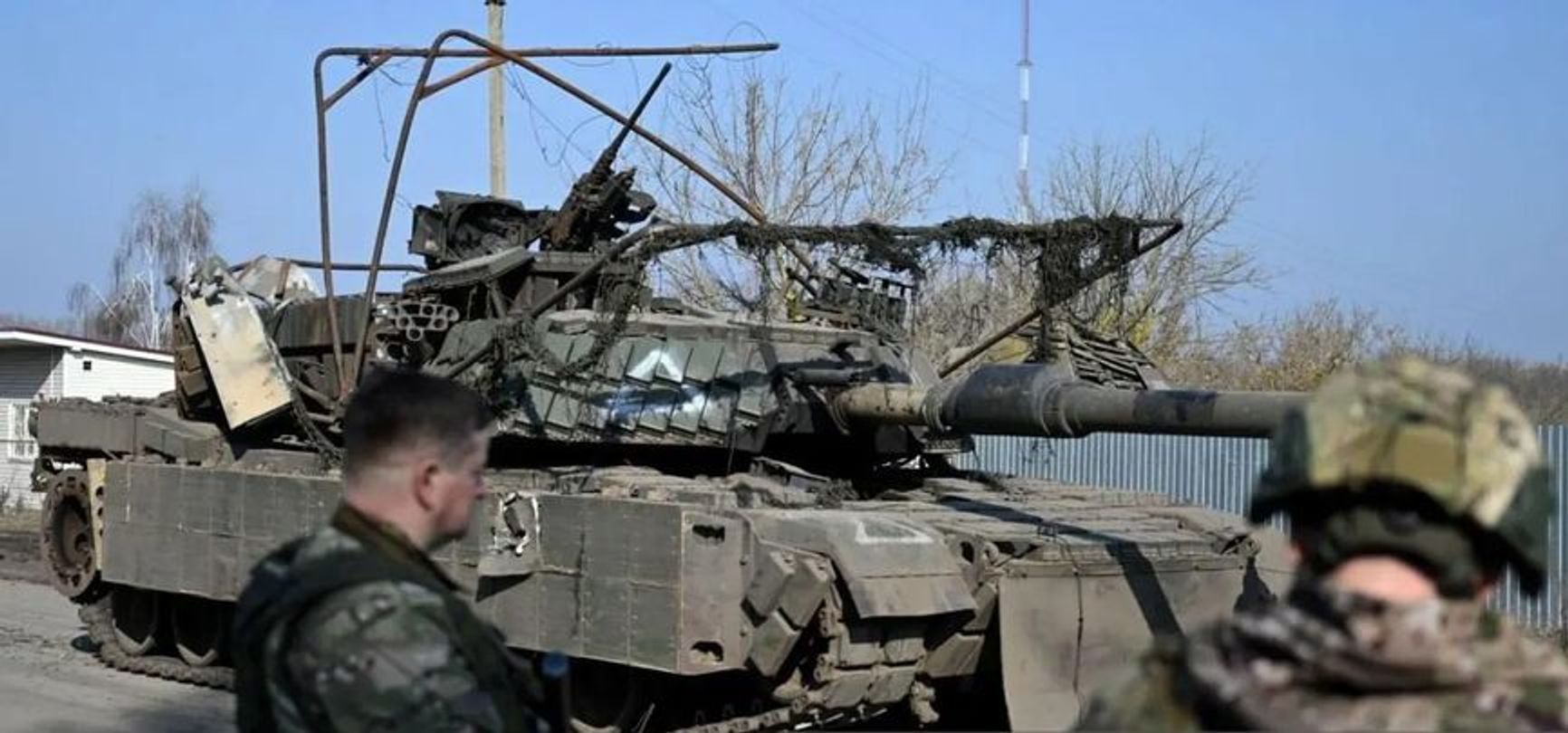
Photo: Oleksandr Klymenko / Reuters

Photo: Oleksandr Klymenko / Reuters
Ukrainian forces have retreated from most of the territory they once controlled in Russia’s Kursk Region. Although history will ultimately have the last word on the Kursk offensive's wisdom and impact on the war, one can draw preliminary conclusions. Initially, the Ukrainian gambit aimed to divert Russian forces from other regions and strengthen Kyiv's position in negotiations. But despite initial tactical success, the gamble in Kursk failed to accomplish the main goals put forward by Ukrainian leaders. While it did tie up a considerable amount of Russian combat power, it also tied up scarce Ukrainian reserves that could have been used on the defense in the Donbas, and it resulted in significant equipment losses that Ukraine is ill-positioned to replace.
Before discussing the goals of the Kursk operation, it’s worth briefly examining why and how Ukrainian forces withdrew. Although the operation didn’t end in the way Kyiv had hoped, Ukraine did manage to avoid catastrophe.
Despite Ukraine’s efforts to widen its flanks after its initial rapid gains it achieved in early August 2024, Kyiv’s forces had to defend a narrow salient that was dependent on a few key roads. In September, Russia retook the initiative and began gradually chipping away at the salient, particularly on the western flank. The arrival of North Korean troops, who first entered battle in large numbers in December, exacerbated Russia’s advantage in manpower. Meanwhile, Russia concentrated a disproportionately high share of its glide bombs in Kursk, pounding Ukrainian positions. Russia also deployed some of its best strike-drone units to the region, where it enjoyed a localized advantage in first-person view (FPV) drones. The Russians widely employed wire-guided FPV drone models, which are impervious to electronic warfare — a rare instance in which Russia outpaced Ukraine in drone innovation.
From late December, Ukraine’s ground lines of communication came under mounting pressure. Traveling from Sumy Oblast to Sudzha, Ukraine’s key hub in the Kursk region, became increasingly perilous, hindering logistics, unit rotations, and casualty evacuation. Russian FPV pilots would often land their drones near key roads and lie in wait to ambush passing vehicles.

Over time, Russian and North Korean advances put Sudzha at growing risk of encirclement and allowed Russian FPV crews to expand their fire control over Ukraine’s main supply route to the town. Burnt-out vehicles littered the road, part of which Ukraine belatedly covered with counter-drone netting.
By early March, the situation had become untenable. Kyiv probably waited too long to withdraw. Some soldiers say they were forced to retreat before being instructed to do so.
Some Ukrainian soldiers say they were forced to retreat before being instructed to do so.
The Trump administration’s decision to pause arms flows and curtail intelligence sharing did not trigger the withdrawal, as some observers suggested. It did, however, affect Ukraine’s ability to conduct precision strikes using Western-provided rocket artillery systems, according to Ukrainian servicemen. Already challenging due to the drone threat, the withdrawal was further complicated by Russia’s destruction of a number of bridges.
While the withdrawal was underway, Russian forces attempted to infiltrate into the Ukrainian rear near Sudzha via a recently shuttered gas pipeline, but it’s unclear what exactly the gambit — dubbed “Operatsiya Potok” (lit. “Operation Flow”) — achieved.
Contrary to claims by Vladimir Putin and Donald Trump, there is no evidence that Russia managed to encircle Ukrainian troops in large numbers. Ukraine did have to abandon some equipment, and although Russia managed to capture small groups of prisoners and strike some retreating forces, most Ukrainian troops seem to have safely returned to Sumy Oblast, often walking 15-20 kilometers over multiple days.
Ukrainian officials offered various goals for the Kursk operation. As often happens, the stated objectives have shifted over time.
First, Kyiv sought to relieve pressure on its forces defending territory in eastern Ukraine. In August 2024, General Oleksandr Syrskyi, Ukraine’s commander-in-chief, said one of the Kursk offensive’s objectives was to “divert significant enemy forces from other areas,” chiefly from the hotspots of “Pokrovsk and Kurakhove.” Ukrainian President Volodymyr Zelensky said something similar during a September 2024 interview with the New Yorker.
Moscow, however, did not take the bait. While Russia did redeploy substantial forces to Kursk, it drew them chiefly from lower-priority areas. In fact, Russia’s rate of advance in the Pokrovsk and Kurakhove directions accelerated after Ukraine’s Kursk offensive began. With Ukrainian forces already stretched thin, the Kursk operation left Kyiv with fewer units available to plug gaps in the Donbas.
The Kursk operation left Kyiv with fewer units available to plug gaps in the Donbas.
The pace of Russian gains in eastern Ukraine later decreased, but this slowdown appears to have stemmed from other factors and may be temporary. (These factors include Ukrainian adaptation, weather, a dip in Russia’s assault tempo as Russian forces regrouped and regenerated following heavy losses, and the surge in U.S. military aid at the end of the Biden administration.)
In March 2025, Zelensky said that the Kursk operation was also intended to relieve pressure on Kharkiv. True, many of the Russian units redeployed to Kursk Oblast came from the Kharkiv direction, and the intensity of Russian bombing in that area declined after the Kursk offensive began. However, Russia’s May 2024 Kharkiv offensive had already long since culminated by the time Ukraine’s Kursk offensive began.
Second, Zelensky and Syrskyi have said Ukraine aimed to establish a buffer zone on Russian territory in an effort to thwart Moscow’s designs on Sumy Oblast. While Russia may indeed have plotted an attack on Sumy Oblast at some point last year, it is unclear to what extent this concern actually motivated the Kursk offensive. Before the operation began, Kyiv reportedly played up the threat to Sumy to help deceive Russia as to why Ukraine was moving forces to the region.
At any rate, a Sumy offensive did not seem imminent when Ukraine launched its Kursk operation. According to Syrskyi, Russia had planned to push into Sumy Oblast after launching its Kharkiv offensive, but the units that had been set aside for the Sumy attack were ultimately fed into the Kharkiv direction after Russian advances there quickly bogged down. In fact, Syrskyi said he saw Kursk Oblast as ripe for attack precisely because Moscow’s change of plans had left its defenses in the region weak — a calculation borne out when Ukrainian forces tore through Russia’s thinly manned lines last August.
Third, as time passed, Ukrainian officials defended the Kursk operation by pointing out that it succeeded in tying up and attritting many of Russia’s best units, which might otherwise have been used for attacks inside Ukraine. Notably, the forces Russia redeployed to Kursk include many of its airborne and naval infantry units, which tend to be of higher quality. These units have suffered considerable losses. According to Ukrainian officials, Russia’s grouping in Kursk totals around 60,000 troops, far larger than Ukraine’s. And as mentioned above, Russia also concentrated a significant portion of its air power as well as some of its best drone units in Kursk.
As time passed, Ukrainian officials defended the Kursk operation by pointing out that it succeeded in tying up and attritting many of Russia’s best units.
However, this argument cuts both ways. Kyiv also committed some of its best units to the operation, and Ukrainian forces likely suffered significant losses, too. Reliable estimates of Russian and Ukrainian casualties in Kursk are hard to come by, but Moscow can certainly replace casualties more easily than Kyiv can.
Regarding equipment, open-source research indicates Kursk is a rare area where Ukraine’s equipment losses have exceeded Russia’s. Moreover, Ukraine’s ability to replace lost equipment depends chiefly on Western assistance. Given policy shifts in Washington, much of the lost American equipment — such as Bradley infantry fighting vehicles — may not be replaced.

Fourth, Kyiv hoped to use the land it controlled in Kursk as leverage in peace negotiations with Russia. “We will swap one territory for another,” Zelensky told The Guardian in February. The Kremlin, however, rejected this idea. Following the re-election of Donald Trump, Moscow may have sought to accelerate its counteroffensive in Kursk so as to deny Kyiv this bargaining chip.
The Kursk offensive did achieve other gains that warrant mention. Ukrainian forces captured hundreds of POWs during the operation’s initial phase, allowing Kyiv to trade them for Ukrainian troops held in Russia.

In addition, after having been on the defensive for most of the prior year, Ukraine’s initial rapid advances into Russian territory buoyed morale. However, Ukraine could have achieved these victories with a brief raid rather than a months-long operation.
Ukrainian forces are currently seeking to prevent the Russians from advancing into Sumy Oblast. After withdrawing from Sudzha, Ukraine has sought to hold a small sliver of high ground in Kursk Oblast while shoring up its defensive lines in Sumy Oblast. Russia has slowly pushed them back while continuing to attack toward the Sumy-Sudzha highway from the north. Meanwhile, a little ways to the south, Ukraine launched an incursion into Russia’s Belgorod Oblast with the reported goal of establishing a buffer zone, though the operation appears to have achieved modest gains at best.
Looking ahead, Moscow could shift units from Kursk to other fronts — such as the eastern Ukrainian city of Pokrovsk, which remains Russia’s main effort. Alternatively, it could keep units in place to try to press deeper into Sumy Oblast. Russia likely could not advance as far as the city of Sumy, but it could attempt to establish a buffer zone along the border — as Putin recently suggested — thereby tying down Ukrainian units. Another unknown is whether North Korea will deploy additional forces to Russia — or even allow its troops to fight on Ukrainian territory.
К сожалению, браузер, которым вы пользуйтесь, устарел и не позволяет корректно отображать сайт. Пожалуйста, установите любой из современных браузеров, например:
Google Chrome Firefox Safari